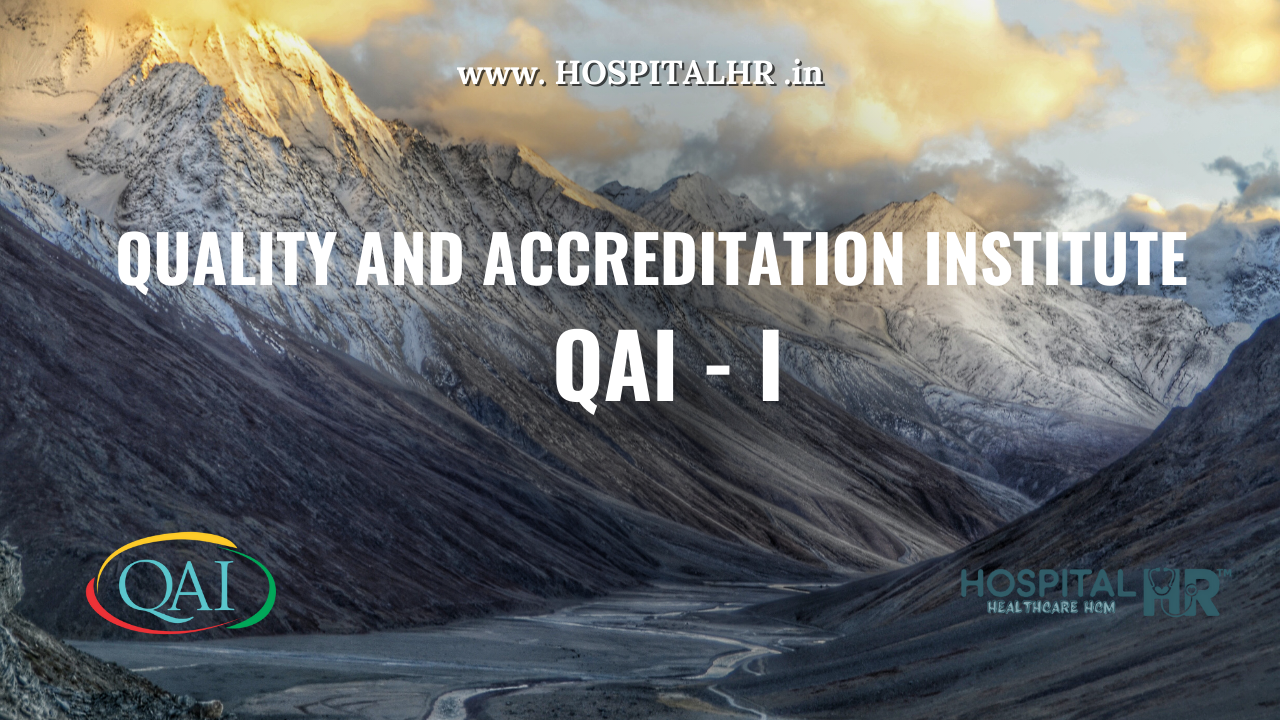The Quality and Accreditation Institute (QAI)
The Quality and Accreditation Institute (QAI) has developed comprehensive accreditation standards for various healthcare services, including hospitals, laboratories, and dental clinics. These standards are structured into specific chapters, each focusing on critical aspects of healthcare delivery. Below is an overview of the chapters and standards for each accreditation program:
1. Hospital Accreditation Standards:
QAI's Hospital Accreditation Standards are organized into ten chapters, encompassing 89 standards and 458 criteria. Each chapter addresses a fundamental component of hospital operations:
- Governance and Leadership (GAL): Focuses on the hospital's leadership structure and governance policies.
- Human Resource Management (HRM): Pertains to the recruitment, training, and management of hospital staff.
- Facility and Risk Management (FRM): Deals with the safety and maintenance of the hospital environment.
- Information Management System (IMS): Covers the handling of patient information and data management systems.
- Continual Quality Improvement (CQI): Emphasizes ongoing efforts to enhance service quality.
- Patient Assessment and Care (PAC): Relates to the processes of evaluating and treating patients.
- Patient Rights and Education (PRE): Ensures that patient rights are upheld and that they receive appropriate education about their care.
- Medication Prescription and Safety (MPS): Focuses on the safe prescribing and administration of medications.
- Hygiene and Infection Control (HIC): Addresses protocols to prevent and control infections.
- Digital Health Application (DHA): Pertains to the integration and use of digital health technologies.
These chapters collectively ensure a holistic approach to hospital accreditation, promoting high standards of patient care and organizational efficiency.
2. Laboratory Accreditation Standards:
While specific details about the chapters in QAI's Laboratory Accreditation Standards are not provided in the available sources, it is typical for such standards to include chapters on:
- Management Requirements: Covering organizational structure, quality management systems, and document control.
- Technical Requirements: Addressing personnel competence, equipment, test methods, and result reporting.
- Pre-examination Processes: Focusing on sample collection, handling, and transportation.
- Examination Processes: Pertaining to the actual testing procedures and methodologies.
- Post-examination Processes: Relating to the interpretation, reporting, and storage of test results.
For precise information, it is advisable to consult QAI's official publications or contact them directly.
3. Dental Accreditation Standards:
QAI's accreditation for dental healthcare service providers includes standards that are structured into specific chapters. While the exact chapters are not detailed in the provided sources, similar accreditation standards typically encompass:
- Governance and Leadership: Addressing the leadership and organizational structure of the dental clinic.
- Human Resource Management: Focusing on the qualifications, training, and management of dental staff.
- Patient Care and Safety: Ensuring safe and effective patient care practices.
- Infection Control: Implementing protocols to prevent and control infections within the dental setting.
- Facility and Equipment Management: Maintaining the safety and functionality of the physical environment and dental equipment.
- Quality Management and Improvement: Promoting continuous improvement in service quality.
- Patient Rights and Education: Upholding patient rights and providing necessary education regarding treatments.
These chapters aim to ensure that dental clinics provide high-quality care while maintaining patient safety and organizational excellence. For detailed and specific information on each accreditation program, it is recommended to refer to QAI's official publications or contact them directly.
Conclusion: Incorporating advanced HR technologies enables healthcare organizations to streamline HR processes in alignment with international standards such as QAI, NABH and JCI, fostering improved compliance and enhanced employee satisfaction.
** For more details or assistance, platforms like hospitalhr.in provide tailored solutions for Indian healthcare institutions.
Thanks & Regards
Hospital HR


Comments (0)
No comments yet. Be the first to comment!